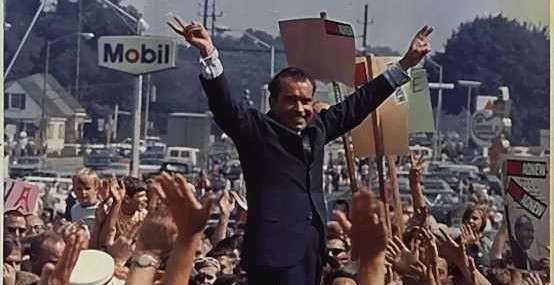[BRIGADE] Pat's New Book!
Published: Tue, 07/08/14
Ben Stein on Buchanan's New Book, The Greatest Comeback

I spent a good chunk of the day reading Pat Buchanan's amazingly fine new book, The Greatest Comeback, on his association with Richard Nixon from late 1965 until Nixon's amazing victory in the '68 election for President. The book is a masterpiece. Others, better at reviewing than I am, will review this book. I will just say I was entranced, astonished, overwhelmed by Pat's observations, his insights, his poetry, the scope of his vision. He is not afraid to be politically incorrect. He is overwhelmingly pro-RN, of course, but compelled to point out logical and historical mistakes in Nixon's worldview. Above all, The Greatest Comeback is the ultimate insider's guide to how the great game of presidential politics is played. I cannot think of a better way to spend your time or your book-buying dollar than on this book. The section on Nixon and Pat's trip to Africa in 1967 and what happened to the leaders they met on that trip will make you gasp.
All in all, for anyone interested in 20th century politics and how the human spirit works within the political process, and the most fascinating man ever to sit in the Oval Office, The Greatest Comeback is must reading. Chapter and verse to follow from the reviewers... my brain reeled at how much Pat Buchanan knows, how funny he is, and how well he writes...
Nixon's the One

The Greatest Comeback by Patrick J. Buchanan - Book Excerpt
Excerpt by Crown Publishing Group on Scribd.comINTRODUCTION
The Resurrection of Richard Nixon
Barring a miracle his political career ended last week.
--Time on Nixon (November 16, 1962)
Buchanan, was that you throwing the eggs?" were the first words I heard from the 37th President of the United States.
His limousine rolling up Pennsylvania Avenue after his inaugural had been showered with debris. As my future wife, Shelley, and I were entering the reviewing stand for the inaugural parade, the Secret Service directed us to step off the planks onto the muddy White House lawn. The President was right behind us. As he passed by, Richard Nixon looked over, grinned broadly, and made the crack about the eggs.
It was a sign of the times and the hostile city in which he had taken up residence. He had won with 43 percent of the vote. A shift of 112,000 votes from Nixon to Vice President Humphrey in California would have left him with 261 electoral votes, nine short, and thrown the election into a House of Representatives controlled by the Democratic Party. In the final five weeks, Humphrey had closed a 15-point gap and almost put himself into the history books along-side Truman--and Nixon alongside Dewey. But the question that puzzled friend and enemy alike that January morning in 1969 was: How did he get here?
In The Making of the President 1968, Theodore H. White, chronicler of presidential campaigns, begins with a passage from Dickens's A Christmas Carol: "Marley was dead to begin with. There is no doubt whatever about that. The register of his burial was signed by the clergyman, the clerk, the undertaker and the chief mourner. . . . Old Marley was dead as a door-nail."
That Richard Nixon would be delivering his inaugural address from the East Front of the Capitol on January 20, 1969, would have been mind-boggling a few years before. This is not to say that Nixon was not a man of broad knowledge, high intellectual capacity, or consummate political skill. He had been seen in the 1950s as the likely successor to Dwight Eisenhower. As vice president, he had traveled the world, comported himself with dignity during Ike's illnesses, survived a mob attack in Caracas, and come off well in his Kitchen Debate with Soviet dictator Nikita Khrushchev. In 1960, no one had challenged him for the Republican nomination.
Yet Nixon had lost. While the election was among the closest in U.S. history, and there was the aroma of vote fraud in Texas and Chicago, Nixon was seen as a loser....
Read more at: Scribd.com